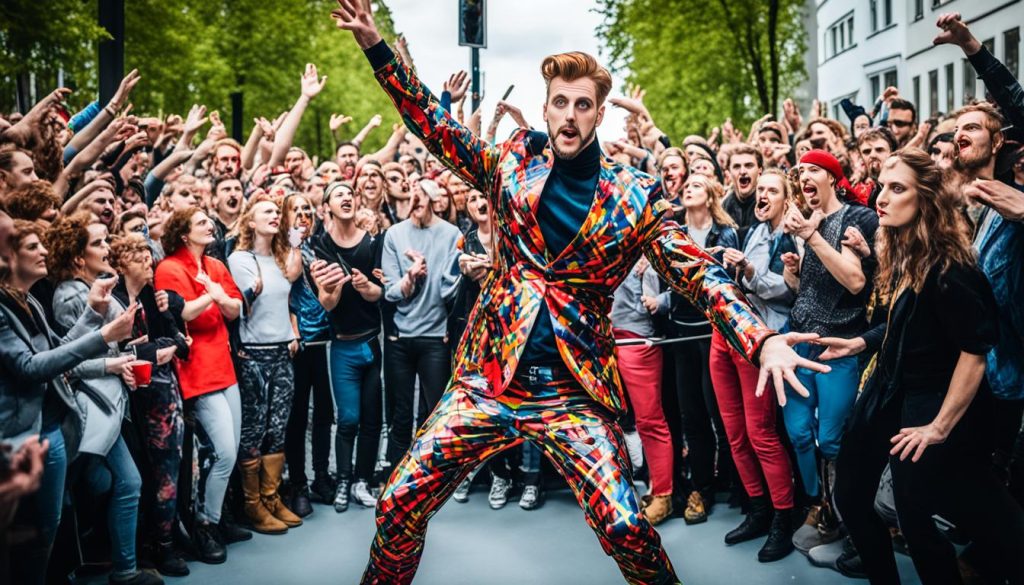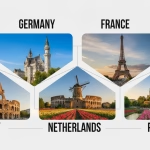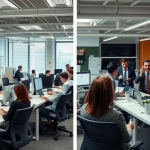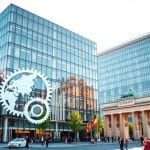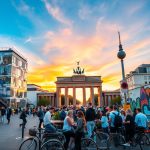Berlin is known for its vibrant creative culture. It is often ranked highly, like in The Times Travel’s ‘Europe’s best cities for art lovers’. Many flock to the city to experience its dynamic art scenes.
- The Rich History of Performance Art in Germany
- Berlin: The Heartbeat of Performance Art
- Performance Art is Another Booming Area in Germany
- Key Figures in German Performance Art
- Munich’s Contemporary Performance Art Scene
- The Influence of Historical Movements on Modern Performance Art
- Government Support for the Arts in Germany
- Popular Performance Art Festivals in Germany
- The Role of Art Schools in Shaping Performance Artists
- The Integration of Technology in Performance Art
- How German Performance Art Reflects Social and Political Issues
- Collaboration and Exchange with International Artists
- The Economic Impact of the Performance Art Scene
- The Audience Experience: Interactive and Immersive Art
- Representation of Diverse Cultures in Performance Art
- Future Trends in the German Performance Art Space
- Source Links
Germany has always made significant contributions to the arts. This creativity reflects the complexities of life and responds to changes in society and politics. The country is the birthplace of famous figures like Beethoven, Franz Kafka, and Franz Marc.
Key Takeaways
- Berlin is acclaimed internationally for its vibrant creative culture.
- Germany remains a central hub for art connoisseurs and creative innovation.
- Historical figures such as Beethoven and Franz Kafka contribute to Germany’s rich artistic reputation.
- Art in Germany serves as a reflection of life and socio-political shifts.
- German performance art continues to be a significant global force in art today.
The Rich History of Performance Art in Germany
Germany has made significant contributions to performance art, deeply tied to its rich cultural past. This history is marked by influential poets, musicians, and artists. Their work has shaped the art world in lasting ways.
In the 1950s, Abstract art started to take off in Germany. Movements like Informel and Tachism changed the game. Artists like Emil Schumacher and Rupprecht Geiger started moving away from traditional art. They began to explore deeper meanings in their work, reflecting the thoughts of their times.
German expressionism is at the heart of performance art here. This style, influenced by great minds like Friedrich Nietzsche, continues to inspire today. The thoughts and feelings behind this movement still touch artists around the world. This includes famous figures like Franz Marc and Emil Nolde.
Abstract art and German expressionism have mingled in Germany’s cultural story. This combination makes a powerful tale. It shows how Germany has shaped global art in unique ways. This blend creates a living, changing art scene in the country.
Berlin: The Heartbeat of Performance Art
Berlin’s art scene is full of life and energy. It is a hub for artists from everywhere. They are drawn here by the affordable living costs and the free-spirited lifestyle. This makes the city’s art world rich and diverse.
Famous Venues and Events
Berlin has many famous places for performance art. The Volksbühne is special because it offers a wide range of acts. It is often compared to top theatres worldwide. The Berlin Biennale is also key. It allows artists to show new, bold work. This event has become one of the city’s most important cultural moments.
- Volksbühne: This historic theatre is a cornerstone of Berlin’s artistic heritage, hosting a blend of avant-garde performances that continue to challenge and inspire.
- Berlin Biennale: This major event offers a platform for contemporary artists to share their cutting-edge creations with an international audience.
Emerging Artists
Berlin gives new artists a great start because of its lively scene and friendly community. It is a place that boosts up-and-coming talent. Many of these artists become well-known worldwide through Berlin’s cultural happenings. An example is Peaches, a game-changer in the performance art world.
In Berlin, new artists have a lot of support. Places like Kunstquartier Bethanien and the Eigen+Art Lab help them show their art. They offer important opportunities to these young talents.
Performance Art is Another Booming Area in Germany
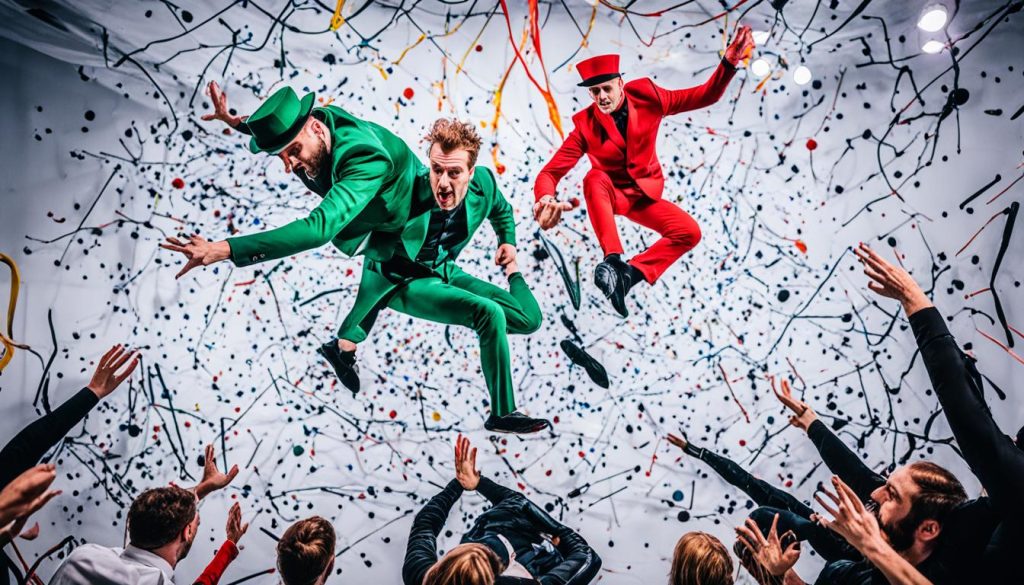
Performance art is growing a lot in Germany nowadays. This expansion reflects changes in politics and culture. It’s becoming a big part of Germany’s art scene, influenced by dynamic trends and German creativity.
The government shows it values the arts a lot. It proved this with a €50 Billion Aid Package during Covid-19. This help boosted performance art’s growth, ensuring artists can keep going and come up with new ideas.
Germany leads in performance art trends, striving to support creativity. Its history proves it’s open to new forms of art, making it key in the global art world. Germany encourages its artists to push boundaries, creating a lively and progressive art culture.
Key Figures in German Performance Art
Germany’s performance art scene owes much to a small group of daring artists. These artists have won fame both at home and abroad. Their work has left a lasting impact on the world stage of art, always pushing the limits of creativity.
Influential Artists
Anselm Kiefer and Gerhard Richter are two standout figures in German art. Kiefer is known for his thought-provoking pieces on history and memory. Richter, on the other hand, is praised for his skill in various art forms. Their art challenges and inspires people worldwide, breaking down old artistic rules.
Contributions to Global Art Movements
Kiefer and Richter have deeply influenced international art. Kiefer’s work with materials and myths has shaped contemporary art globally. Richter’s unique methods have influenced many artists, setting new trends in the art world. Together, their efforts place German performance art at the heart of global discussions, keeping it fresh and important.
Munich’s Contemporary Performance Art Scene
Munich is famous for its lively art scene, focusing on contemporary and performance art. It offers something special for art lovers, with its array of Munich art destinations. These include modern galleries and historic museums.
The Pinakothek der Moderne is Europe’s big contemporary art gallery. It has a huge collection of modern art. This gallery lets visitors see a new side of creative expression. Right next to it is the Haus der Kunst. It shows Munich’s deep interest in contemporary art. Here, visitors find innovative performances and exhibitions.
Munich has played a key part in starting different art movements. For example, it was central to Der Blaue Reiter. This shows how important Munich is in the art world. Its rich cultural history attracts new artists and fans. As a result, Munich is a lively place for both old and new art.
- Pinakothek der Moderne: Known for modern masterpieces, it’s a key Munich art destination.
- Haus der Kunst: Recognised for its bold exhibitions and performances.
Visiting Munich art destinations helps one deeply understand contemporary art’s growth. It also shows the lively world of performance art in Munich. Whether you love art or are just starting to explore, Munich’s art galleries promise an amazing experience. They mix classic art with new, telling rich stories of art.
The Influence of Historical Movements on Modern Performance Art
German performance art draws on a rich history. It’s influenced by past artistic movements. Today, it reflects a blend of traditional and modern art.
Expressionism and Its Continued Impact
Expressionism began in Germany, focusing on deep human emotions. It distorted reality to show inner feelings. This approach continues to influence art that challenges norms and stimulates the mind.
Abstract Art and Performance
In the 1950s, abstract art became a key part of German art. After the war, artists felt compelled to express deep struggles. They did this through non-traditional art forms.
Emil Nolde was vital in this change. He led German art into a new, innovative era. The effects of these changes can still be seen. They inspire today’s performances, showing a link between the old and the new in Germany’s culture.
Government Support for the Arts in Germany
Germany’s government shows strong support for the arts, seen in the €50 Billion Aid Package given during the Covid-19 crisis. This aid helped right away and showed how valuable the arts are to both culture and the economy.
Museum Island and Pinakothek Museums benefit greatly from this support. They receive ongoing funding, which helps their cultural progress. As a result, they can thrive and bring in visitors from all over the world. Moreover, the government’s backing goes beyond just money. They also make policies to cultivate a lively cultural scene.
Such focused support promises a bright future for Germany’s artistic world. By supporting the arts continually, the government fosters imagination and innovation. This support lets the arts grow and remain key to Germany’s identity and culture. It ensures a continuous cultural evolution.
Popular Performance Art Festivals in Germany
Germany is home to many amazing festivals that focus on performance art. These events bring together people from all over the world. They showcase Germany’s artistic talent.
Berlin Arts Festival
The Berlin Arts Festival is a key event in the performance art calendar. It’s famous for its diverse acts, giving both new and known artists a chance to shine. Guests enjoy a mix of theatre, dance, and cutting-edge arts, making Berlin a creative hotspot.
Munich Fringe Festival
Deep in Germany’s cultural scene lies the Munich Fringe Festival, a celebration of daring performances. Artists from around the world come to present new and exciting acts. It’s a must-visit for those who love art and culture, creating a vibrant scene for creativity.
These festivals not only liven up Germany’s culture but also bring people together from various nations. They make space for art and cultural exchange, showing how Germany values the world of performance art.
The Role of Art Schools in Shaping Performance Artists
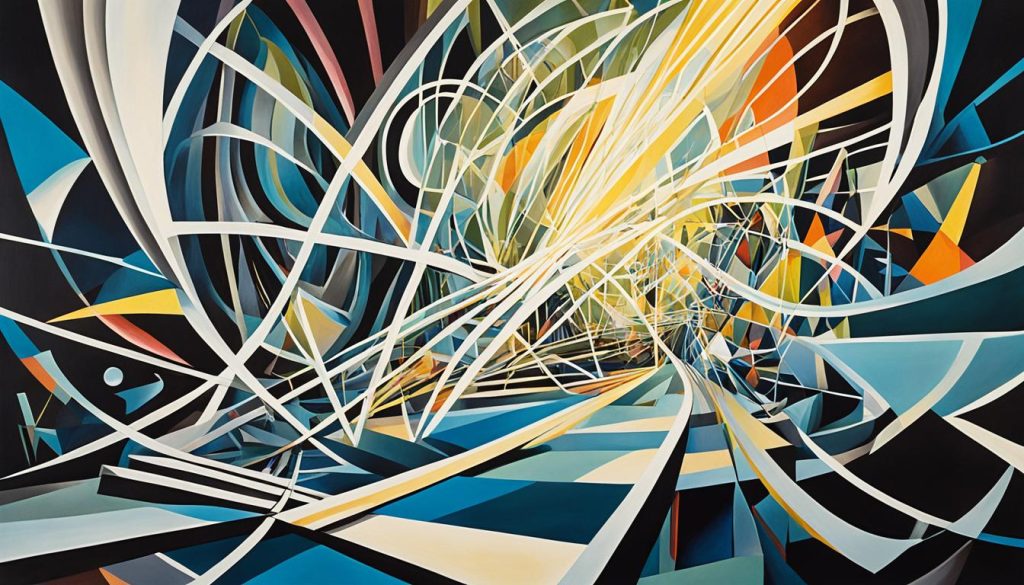
Art education plays a vital role in shaping the future of performance artists. Schools like the Berlin School of Business and Innovation work closely with the University for the Creative Arts. They offer special programmes that are key in helping students follow their creative dreams.
Programmes such as the BA (Hons) Illustration are at the heart of this. They aim to lay a strong base for those wanting a career in creativity. These courses use new teaching styles. This helps students prepare for many creative jobs.
Talking about hands-on experiences and what you learn in class, both are important. These schools play a big part in training performers. They make sure graduates can succeed in the ever-changing world of creativity.
Also, the connections students make while at these schools are precious. They can help kick-start and keep up successful careers. So, art schools really do a lot in preparing artists for their future.
The Integration of Technology in Performance Art
Germany’s performance art scene is changing fast. Artists are using tech more to boost their creativity. By blending art with technology, they are creating more immersive experiences. This makes performances easier to enjoy for people all over the world.
Virtual Reality and Augmented Reality
Virtual reality (VR) and augmented reality (AR) are leading this transformation. Artists use VR to build whole new worlds for their shows. Audiences can then jump into these worlds and be part of the performance. AR is also changing how we see traditional sceneries, making them come alive during live shows. These techs improve not only how art looks but also how we experience it.
Digital Platforms and Live Streams
Another big change is the use of digital platforms and live streaming. Now, artists can share their work with more people in creative ways. Live streams let viewers join in real time, no matter where they are. This breaks down barriers and makes art more open to everyone. Digital platforms also help artists work together, show their art, and reach different audiences.
The use of tech in art reflects a big change in Germany’s performance art. As VR and digital shows get better, they offer new chances for both artists and viewers. This leads to a more lively and open art world for all.
How German Performance Art Reflects Social and Political Issues
Performance art in Germany acts like a mirror for today’s social and political scenes. It uses its platform to observe and talk about the issues of our times. German artists use performance art to discuss big issues like migration, fairness, leadership, and taking care of our planet. This sparks important discussions.
This form of art is very good at making people think. It’s a unique kind of political art that gets people to really look at their own thoughts. By involving the audience in the art itself, German performance art changes viewers into active voices in these talks.
The history of Germany’s politically-motivated art still shapes what we see today. Artists have contributed to talking about society since the Weimar Republic era. Their creativity has always been a tool for change and deep thinking.
German performance art is very important for speaking up through artistic social commentary and political art. It shows how art can both reflect and shape our world. By daring to challenge what’s normal, German artists keep their art an important part of the global cultural scene.
Collaboration and Exchange with International Artists
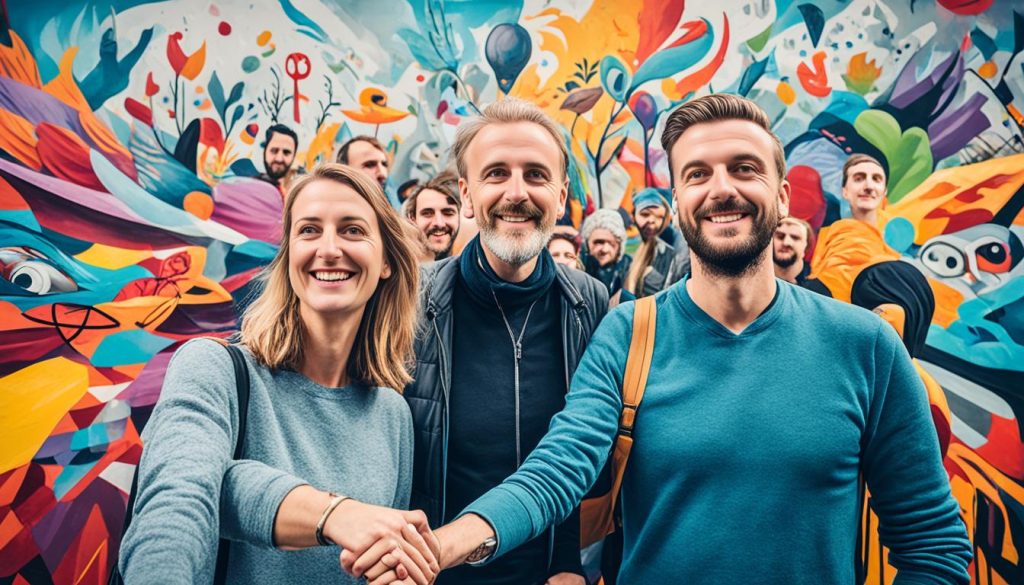
Germany’s performance art scene is vibrant, thanks to global artistic collaboration and cultural exchange. Inviting artists from all over, Germany keeps its creativity fresh. This adds diverse influences and new ways of creating.
Residency Programs
In Germany, residency programmes draw artists worldwide. They get a chance to create in an environment full of freedom. Places like the Künstlerhaus Bethanien in Berlin are hubs for this. They help artists grow and share their work, leading to cultural exchange and talks on art.
International Festivals and Workshops
Several German cities hold big, international festivals and workshops. These are important stages for art from all around the globe. The Berlin International Film Festival and Documenta in Kassel are great examples. They emphasise global artistic collaboration. Here, you’ll see art from many places, find workshops to join, and discussions about creativity.
With both local and global art blending, Germany stays at the forefront of creativity. This mix makes Germany key in global artistic collaboration and cultural exchange.
The Economic Impact of the Performance Art Scene
The performance art scene in Germany is vital for the nation’s economy. It brings together creativity and big financial gains. This lively world is a key part of cultural expression and drives a lot of economic activity.
Investments from the government highlight performance art’s importance. They provide funds to protect Germany’s traditions and support new ways of thinking. Art festivals, museums, and institutions not only attract visitors but also create jobs.
The cultural sector in Germany is also boosted by art schools. Here, future artists are trained, ensuring a continuous stream of creative talent. Major events and festivals attract people from around the world. They help in cultural sharing and improve local economies. This link between art and economy is key in keeping the performance art scene vibrant and important in Germany.
The Audience Experience: Interactive and Immersive Art
Nowadays, German performance art invites the audience into a unique world. Here, you don’t just watch; you interact with art in a way that goes beyond the usual. This change is driven by artists who keep pushing the limits. They bring performance and the audience together in real time.
Site-Specific Performances
Performances that fit their surroundings perfectly are on the rise. They could be in a bustling town or a quiet forest. In each place, the art changes how we see things. The audience becomes a part of the performance, shaping their own experience.
People find themselves connecting with the art in a unique, personal way. It’s more than just watching; it’s feeling like you are inside the art piece.
Interactivity in Modern Performances
Interactive art is changing the game in the art world. It merges technology with creativity. The result? Performances where you are not just a viewer, but a participant. This setup breaks down the wall between the artist and the audience.
Thanks to this, every interaction you have with the art feels special. You play a part in the story, making your experience memorable.
Representation of Diverse Cultures in Performance Art
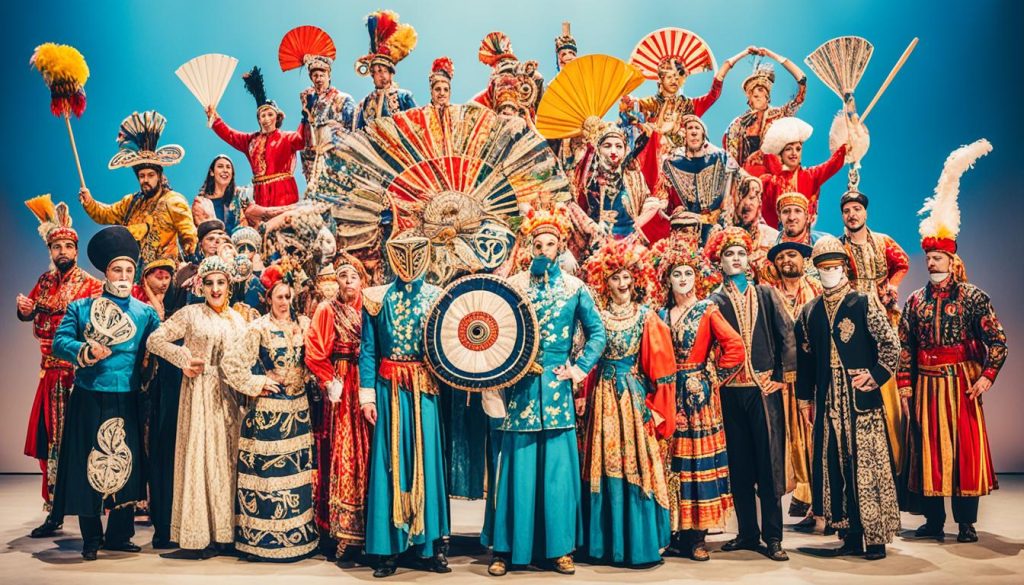
Germany’s performance art scene shows how important cultural diversity is. It brings together many voices and stories, creating a lively and welcoming community. Across the country, you can see a strong focus on different cultural expressions in the arts.
By including various cultural aspects in their shows, artists make the experience richer. This also helps different groups talk to each other. The mix of ideas in art makes people appreciate the world’s cultural wealth.
In places like Berlin and Munich, you’ll find events with artists from around the globe. This shows these cities are very international. Festivals and workshops are also common, where artists can meet and tell their stories.
Germany’s performance scene does a lot more than just reflect society. It drives the creation of new art forms. By allowing different cultures to share their stories, German performance art stays exciting and important to everyone, at home and worldwide.
Future Trends in the German Performance Art Space
Germany is making its mark in the world of art. It’s combining art with technology in exciting ways. This mix is leading to amazing performances beyond what we’ve seen before. The use of digital tools like virtual and augmented realities is redefining how we experience art.
Artists are using tech to create worlds that draw people in like never before. They’re making performances that are not just seen but felt. This change means art in Germany will soon be more about sharing experiences and ideas.
Also, more and more, artists are thinking about the planet and bringing that into their work. Their shows often talk about important topics. This focus makes the German art scene a place that’s always ready to try new things. It guarantees that the future of art here stays fresh and full of new ideas.

